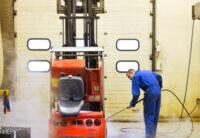In the late 1790s and early 1800s, Great Britain held a monopoly on advanced textile mills and machinery. The United States depended on British imports for finished goods. However, the British sought to protect their economic advantage by banning the emigration of skilled workers who possessed knowledge of the latest manufacturing techniques. Despite this ban, some skilled British mechanics managed to migrate to the United States, driven by the desire to profit from their expertise in advanced textile manufacturing.
One such mechanic was Samuel Slater, who understood the workings of water-powered textile mills pioneered by British industrialist Richard Arkwright. Slater convinced American merchants, including Moses Brown, a wealthy industrialist from Providence, to invest in building a water-powered cotton mill in Pawtucket, Rhode Island. This marked the birth of the first successful cotton mill in the United States. The success of Slater and his partners inspired the establishment of more mills in Rhode Island and Massachusetts.
Table of Contents
The Impact of Political Factors
The Embargo of 1807, enacted by President Jefferson, and the subsequent War of 1812 played crucial roles in the development of industry in the United States. These events disrupted American merchants’ trade with the Atlantic, leading to financial difficulties. Francis Cabot Lowell, who had observed English mills during his stay in Great Britain, recognized the need for industrialization as a means to overcome economic challenges. He returned to Massachusetts and utilized the designs of advanced textile machines he had memorized, leading to the creation of the Boston Manufacturing Company.
The Boston Manufacturing Company, established in 1814, raised $400,000 from wealthy investors known as the Boston Associates. They constructed textile mills in Waltham, Massachusetts, where the entire process of cotton production was centralized. This centralized approach eliminated the need to outsource certain tasks to farm families, as all the work was performed within the factory.
Mechanization and Specialization
The mills operated by the Boston Associates introduced mechanization and specialization to the workforce. Specialization involved breaking down work into specific tasks, assigning each worker a particular task to be repeatedly performed throughout the day. As machines gradually replaced human labor, workers found themselves confined to monotonous, repetitive tasks, leading to the process of deskilling.
The Boston Associates’ mills, unlike smaller mills, preferred individual workers rather than family units. Young men and women, in search of alternative employment opportunities due to the limited prospects in farming, were drawn to the textile mills. While young men had various occupations to choose from, young women found suitable employment in the textile industry. To ensure the protection of their daughters’ virtue and maintain a wholesome environment, the Boston Associates implemented strict rules and regulations. Workers lived in company-owned boarding houses, adhered to a twelve-hour workday, refrained from talking while working, and were expected to attend church.
The Expansion of Industrialization
The mechanization of industries extended beyond textiles. Considerable advancements occurred in shoe making, leather tanning, papermaking, hat making, clock making, gun making, and flour milling. Oliver Evans revolutionized the milling industry with his automated system, which significantly reduced the labor required. Flour mills utilizing Evans’s system spread throughout the mid-Atlantic states, increasing efficiency and productivity.
The success of the Boston Associates and the mechanization of industries in New England also inspired entrepreneurs in other regions. Textile mills were established in New York, Delaware, Pennsylvania, and even in the South, where cotton production thrived. By the time of the Civil War, over 878 textile factories had been built in New England alone, employing more than 100,000 workers and producing over 940 million yards of cloth.
Industrialization in the United States during the first half of the nineteenth century laid the foundation for economic growth and technological advancement. The transition from manual labor to mechanization revolutionized various industries, increasing productivity and shaping the nation’s future.

